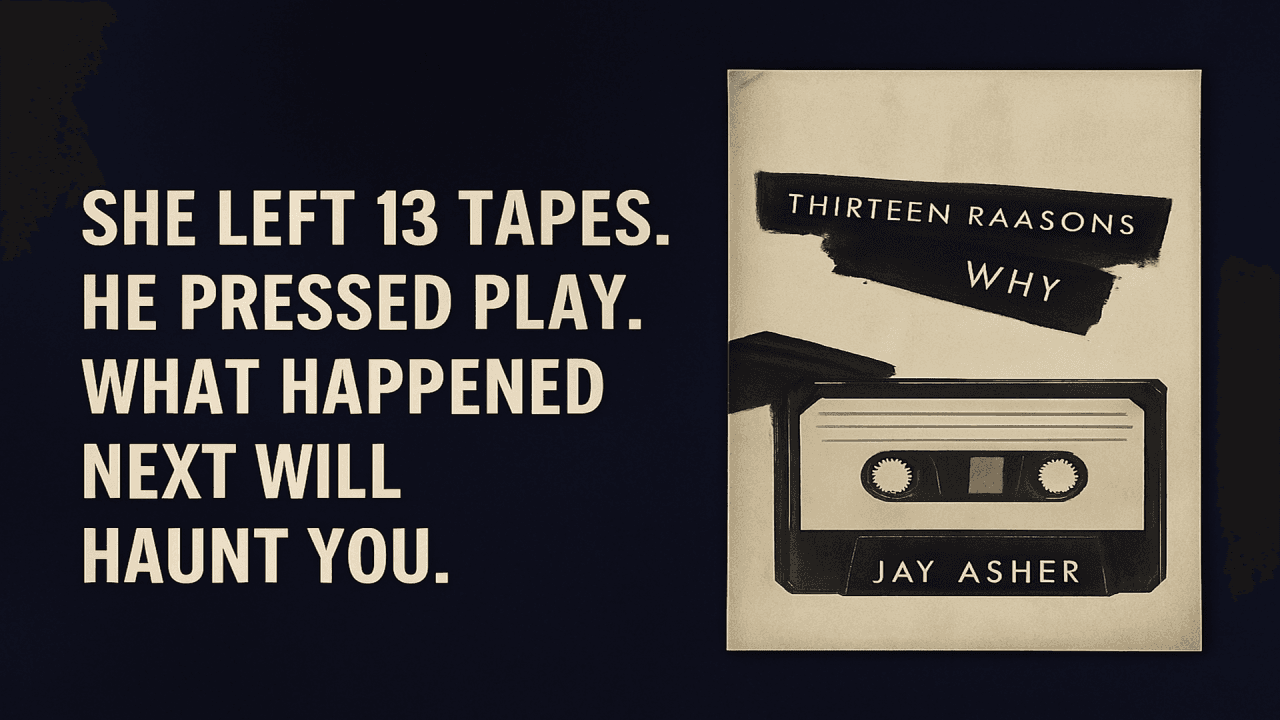This YA Novel Made Parents Panic and Teens Cry - Here's Why It Still Matters
The Story That Divided a Generation
When Jay Asher's debut novel hit shelves in 2007, nobody predicted it would become one of the most controversial young adult books ever written. Thirteen Reasons Why didn't just tell a story—it ignited a cultural firestorm that continues burning today.
What Made This Book So Explosive?
The premise is deceptively simple: Clay Jensen receives a box of cassette tapes from Hannah Baker, his classmate who recently died by suicide. Each tape reveals one reason why she made her final decision, and Clay discovers he's one of the thirteen people on her list.
But here's what made readers—and critics—lose their minds:
The Controversial Element: Hannah narrates her own story from beyond the grave, essentially giving readers a "suicide note" in novel form.
The Numbers Don't Lie
- 7 million copies sold worldwide
- Translated into 35+ languages
- 3 years on the New York Times bestseller list
- Netflix adaptation watched by millions (and later pulled from the platform)
- Countless school bans and challenges
Why Parents Were Terrified
Mental health experts and parents raised serious concerns:
- Romanticization fears: Does the book glorify suicide as a form of revenge?
- Contagion effect: Could vulnerable teens see Hannah's method as a "solution"?
- Graphic content: The detailed descriptions of bullying and assault
- Blame game: Hannah's tapes essentially blame others for her death
But Here's What Supporters Argued
The book's defenders fought back with compelling points:
- Conversation starter: It opened crucial dialogues about mental health
- Recognition factor: Teens saw their struggles reflected authentically
- Bullying awareness: Showed how "small" actions can have devastating consequences
- Help-seeking message: Clay's journey demonstrates the importance of reaching out
The Netflix Effect: When Fiction Became Reality
When Netflix adapted the book in 2017, the controversy exploded again. The streaming giant eventually removed the graphic suicide scene after mental health experts raised alarms about copycat incidents.
The statistics were sobering: Some studies suggested a correlation between the show's release and increased suicide rates among young people, though causation remains debated.
What Mental Health Experts Actually Say
Dr. Sarah Chen, adolescent psychiatrist, explains: "The book isn't inherently dangerous, but it should never be read in isolation. Young people need adult guidance and support when processing these themes."
Key concerns include:
- Lack of professional help-seeking in the narrative
- Portrayal of suicide as inevitable rather than preventable
- Missing emphasis on mental illness as a treatable condition
The Lasting Impact: Good or Bad?
Positive Changes:
- Increased funding for school counseling programs
- More open conversations about teen mental health
- Greater awareness of bullying's serious consequences
- Improved crisis intervention resources
Ongoing Concerns:
- Some schools still struggle with how to address the book
- Parents remain divided on age-appropriate content
- Mental health advocates continue pushing for better representation
What This Means for Today's Readers
If you're considering this book for yourself or a young person:
DO:
- Read it with support available
- Discuss the themes with trusted adults
- Know the crisis resources in your area
- Understand it's fiction, not a guide
DON'T:
- Read it during a mental health crisis
- Assume it accurately represents all teen experiences
- Use it as a substitute for professional help
- Read it without considering your emotional readiness
The Bigger Picture
Thirteen Reasons Why represents a crucial moment in young adult literature—when authors began tackling previously taboo subjects head-on. Love it or hate it, the book forced society to confront uncomfortable truths about teen mental health, bullying, and suicide.
The real question isn't whether the book is "good" or "bad"—it's how we can use its impact to create better support systems for young people struggling with similar issues.
Resources That Matter
If this newsletter brings up difficult feelings:
- National Suicide Prevention Lifeline: 988
- Crisis Text Line: Text HOME to 741741
- Teen Line: 1-800-852-8336
- Your local school counselor or mental health professional
The Verdict
Fifteen years later, Thirteen Reasons Why remains as controversial as ever. But perhaps that's exactly why it continues to matter. Books that make us uncomfortable often force the most important conversations.
Whether you see it as a dangerous influence or a necessary wake-up call, one thing is certain: Jay Asher created a cultural phenomenon that forever changed how we talk about teen mental health in literature.
Get your copy and see why parents, teens, and experts are still arguing
Remember: If you or someone you know is struggling with thoughts of suicide, help is available. You're not alone, and your story isn't over.

